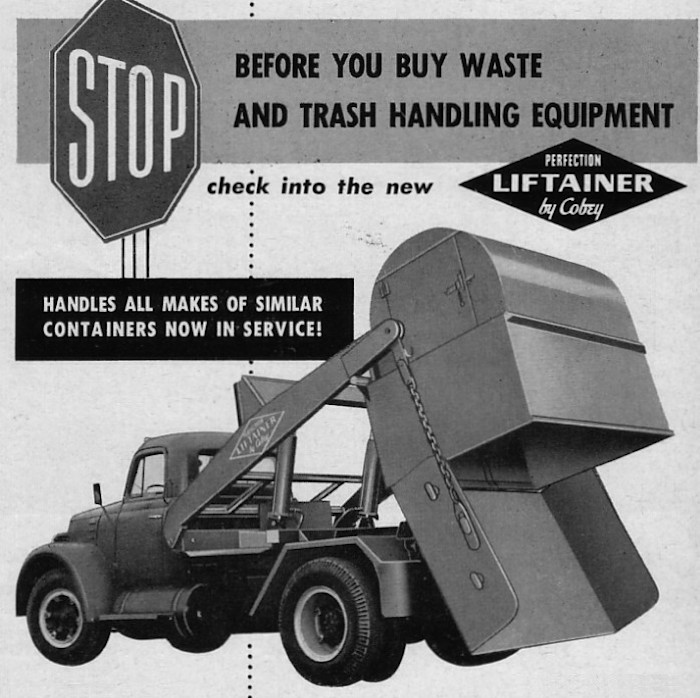
Looking for dumpsters and a fortie or fifties dumpster truck. 

Original Post
|




|

Replies sorted oldest to newest



quote:The firm's first true refuse truck was a bottom-dumping, short-haul lugger called the Liftainer, introduced in 1958. Very similar to the Dempster Dumpster System, it marks the first time the Cobey name would appear on truck equipment, having heretofore been applied only to the farm implement line. Litfainer would remain in production through the late 1970s.


 Jim
Jimquote:Originally posted by CSX Al:
Murph, I really like the look of your dumpster. ...

quote:Originally posted by CSX Al:
Sirt, are your dumpsters cast from resin?

Access to this requires an OGR Forum Supporting Membership
